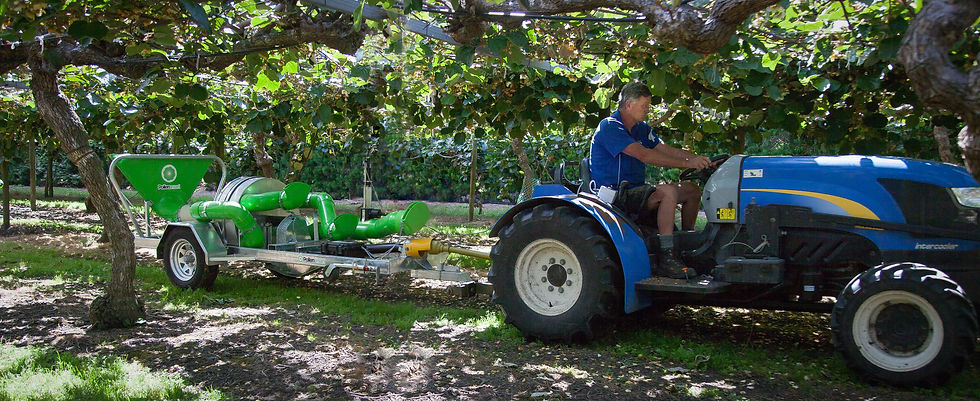Pollinator the stuff dreams are made of
The innovation promising to save kiwifruit orchardists time and money in wasted pollen and sub-optimal fruit is celebrating a year of success since it was awarded the prestigious Launch NZ Innovation Award.
The PollenSmart, dreamt up by kiwifruit orchardist and inventor David Horwood and designed and manufactured by Whakatane farm engineering company The Wrangler, won the award at the 2016 National Agricultural Field Days.
It has spent the last year building a reputation as one of the most exciting innovations to hit the kiwifruit industry in years. The innovation debuted at Northland Agricultural Field Days in March, and interest has been backed up by orders: the first batch of PollenSmart machines manufactured was fully subscribed, and momentum is continuing to grow.
Inventor David Horwood wanted a machine like PollenSmart in response to his own concerns. Tired of watching precious and expensive bee pollen go to waste when pollinating his own vines, Horwood dreamed of something that would use the pollen much more efficiently.
The Wrangler’s Wilco Klein-Ovink and Rikus Rautenbach carefully designed the machine; having owned a kiwifruit orchard, Wilco understood the importance of good pollination and setup while inventing the PollenSmart.
With the PollenSmart, the pollen is placed into the dispenser, which can be programmed to release the exact quantity required. The fan then blows pollen onto the open flowers not once but four times, via a vacuum intake which recycles some of the unused pollen.
The result of research trials on several Bay of Plenty orchards in the 2015/16 season showed the PollenSmart increased yield, reduced costs and optimised pollination timing.
Multiple, light applications of pollen gave superior results compared to a single pass with a heavy rate of pollen, and the more often a flower was pollinated, the bigger and better the fruit.
Horwood was as stunned as anyone to see the incredible results.
“Seeing the results has opened my eyes to the massive gains that can be achieved through applying extra pollen in an efficient and timely manner,” he said.
“I will now use the PollenSmart to apply low rates of pollen five or more times through the flowering season, spending less money on pollination than I used to but achieving much better results.”
During the last year, grower feedback led the Wrangler team to make a few changes.
It is now offering a PollenSmart double – a wider machine with a double dispenser and double airflow out the front. The conventional PollenSmart will cover a 3.5m wide row, while the double machine will throw to 4.8m wide.

The new pollination season will bring with it the chance to conduct more trialling and testing, and with more orchardists using the innovation, results will become more measurable as time goes on.
With artificial pollination due to take place in spring, the Wrangler team is hoping to make 40 PollenSmart units that they hope will be snapped up in time for pollination.























